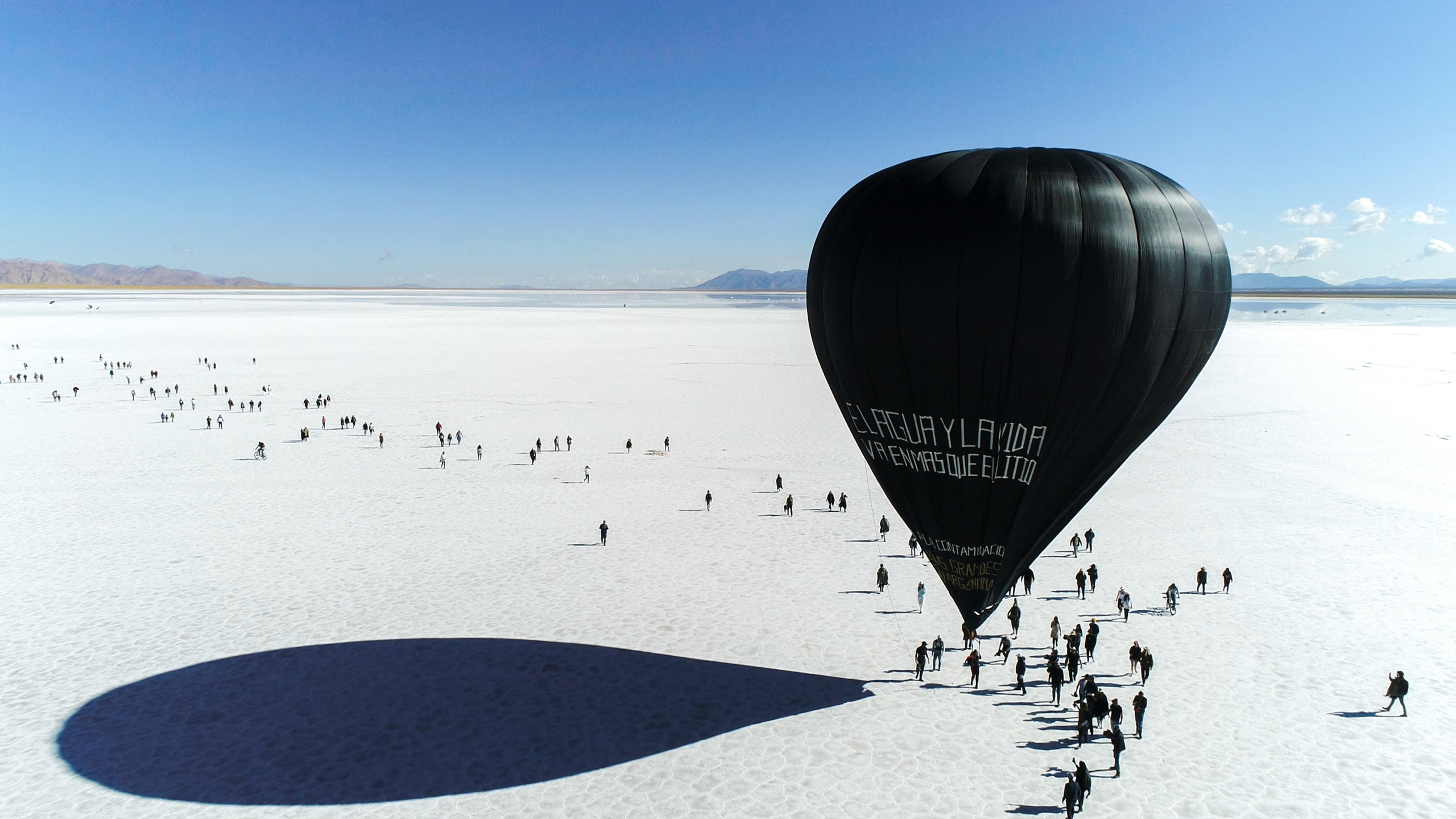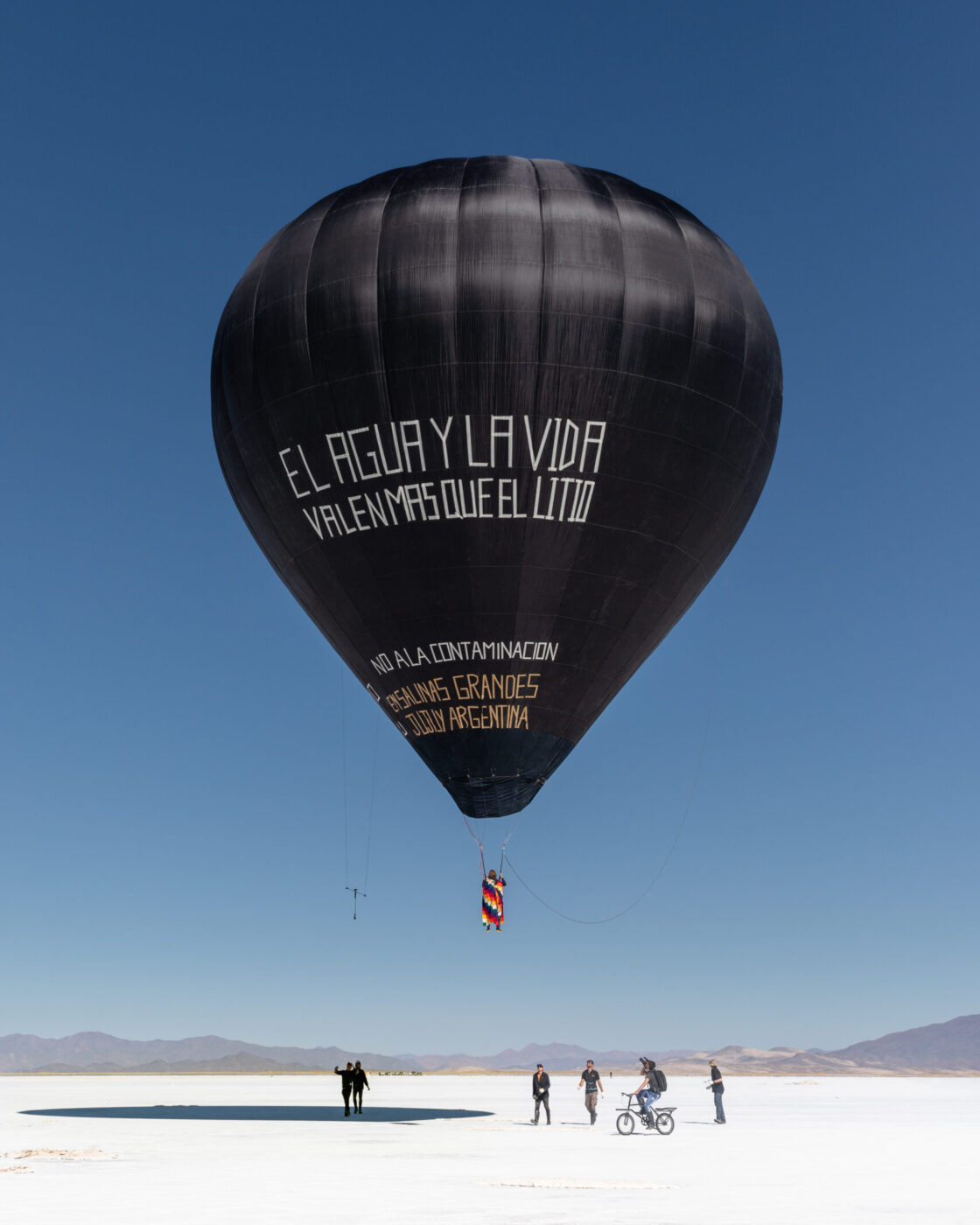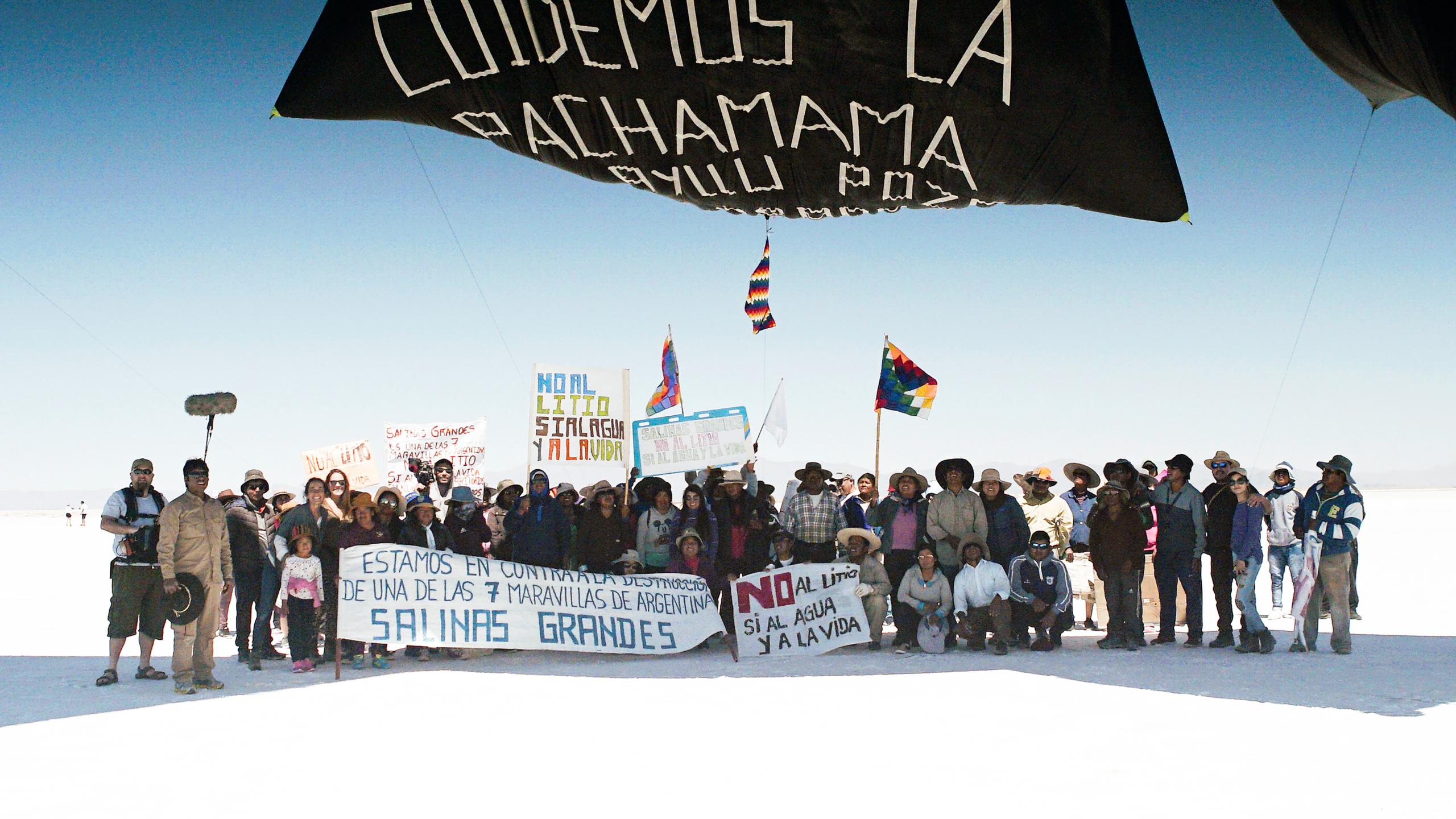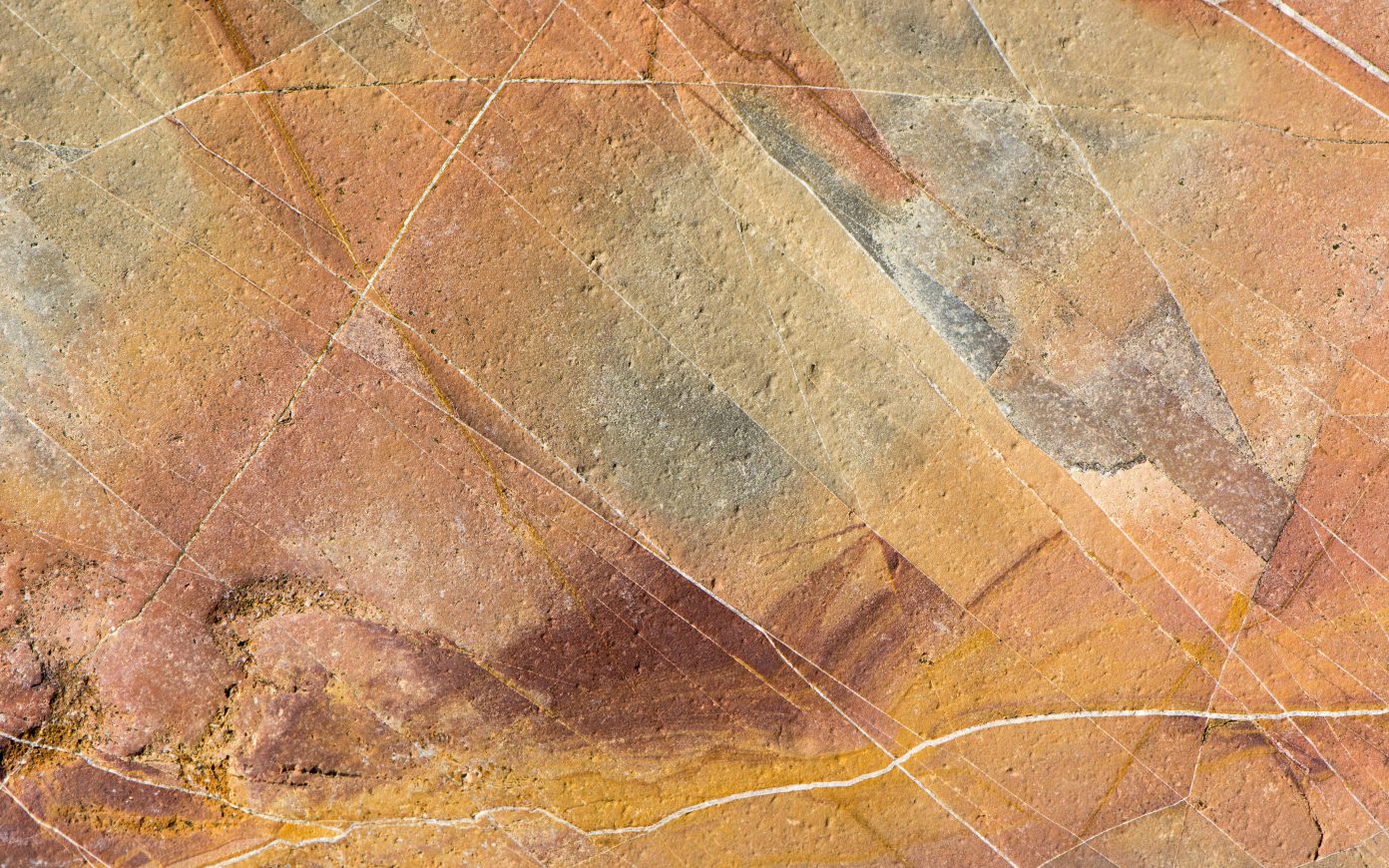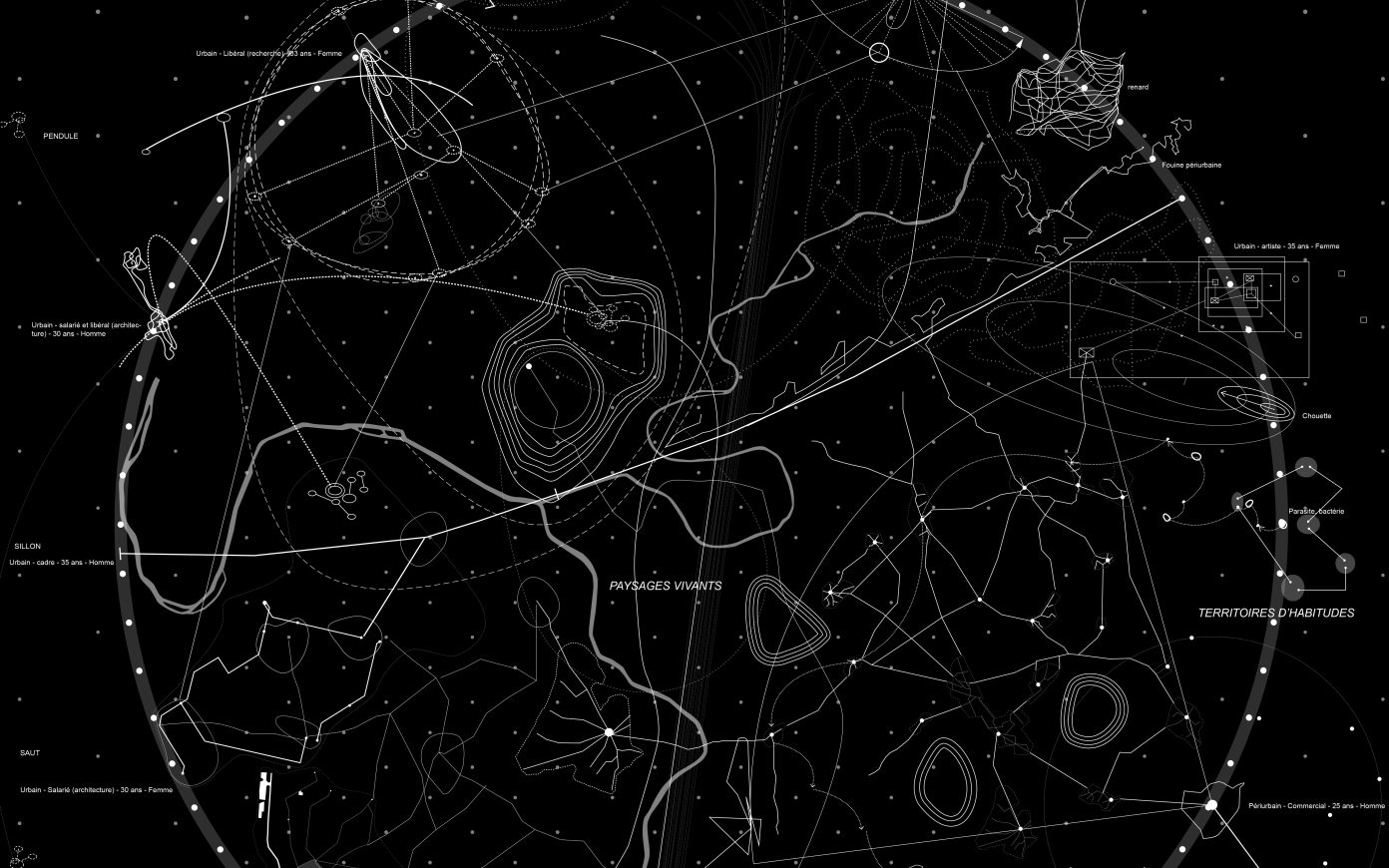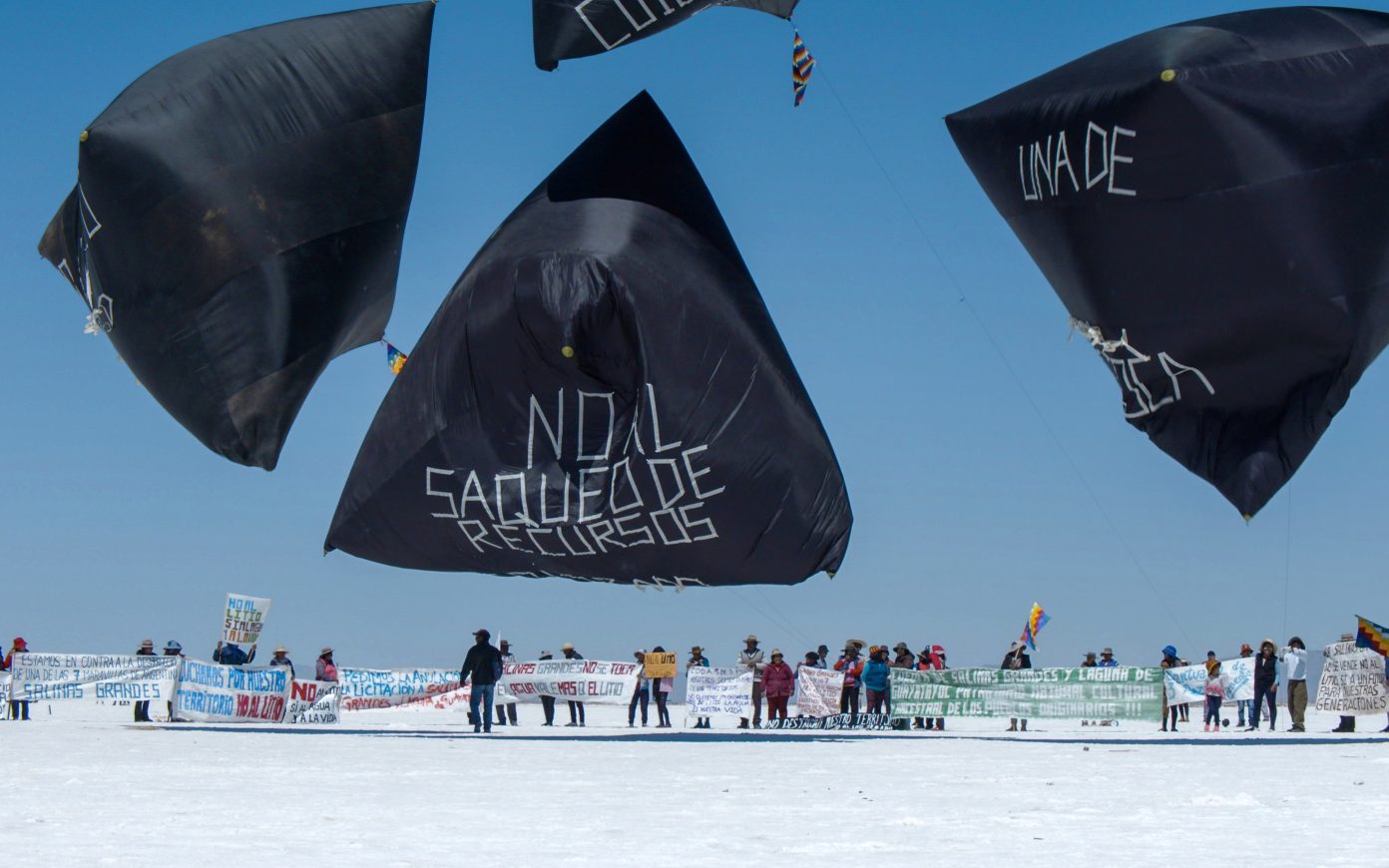We decided to create a flying sculpture, based on the principle of the hot-air balloon, bearing a slogan, “Water and Life are Worth More than Lithium” written with the communities of Salinas Grandes in Jujuy. The flight of Aerocene Pacha took place without any use of fossil fuels, batteries, lithium, solar panels, helium, or hydrogen. It marks the most sustainable flight in human history, and one of the most important experiments in the history of aviation. The sculpture rises up thanks to the temperature difference caused by the hot sun, in other words thanks to the collaboration between the sun and the atmosphere, and our collaboration with them, but also thanks to dialog and collaboration between humans. Together with the communities, we carried out the Pachamama ritual, thanking Mother Earth and asking for its blessing. There, in the salt lake, a meeting of different cultures and generations took place, with Korean and Argentinian youth coming together to sing BTS songs in Korean, as well as people from the art world, friends, and family. It was really wonderful to see all these people working together, especially since we were conveying a very strong message with the indigenous communities, a message everyone could see carried off into the sky.
We received confirmation from the Fédération Aéronautique Internationale (FAI) that this was the most sustainable flight in human history, more so than those of the Wright or Montgolfier brothers, or than anyone who has ever managed to lift themselves into the air! FAI, based in Lausanne, is the authority for air and space flight. For over a century they have recognized the most important accomplishments in air and space; awarding world records to individuals such as Peter Lindbergh, Maryse Bastié, Yuri Gagarin, the crew of Apollo 11. For the Pacha project, these thirty-two world records also represent the profound contributions made by the communities of Salinas Grandes. The exchange of local knowledge and the struggles faced by the native communities as a result of the extractive lithium industry that now plagues the region were central to the narrative of the Aerocene Pacha project, defining the next step toward humanitarian action for the Aerocene Foundation.
Aerocene Pacha also shows that technology could—and needs to—be coupled with social coherence and decoupled from extractive energies. It illustrates the activist dimension of artistic work, which isn’t simply about generating emotions, but also about revealing prospects for concrete alternatives, coupled with genuine social coherence. Artists now increasingly want to contribute more toward welfare, redistribution, and equality within society. It isn’t only an artistic practice and we often diverge into crafting governance, the processes that will help shape our work. For instance, we experiment with practical solutions and share all the information and data of the project in an open source way.
I believe that we must step up collective actions like this one on all fronts, not only as artists or architects who stick to their fields. Being an architect isn’t enough to really contribute to change things, if it ever was. We must engage in rethinking the way we’ve been designing and organizing in the West, open up to other disciplines, other societies, and other worldviews. Quite simply, we have to move beyond the silos in which Western modernity has enclosed us.’’
